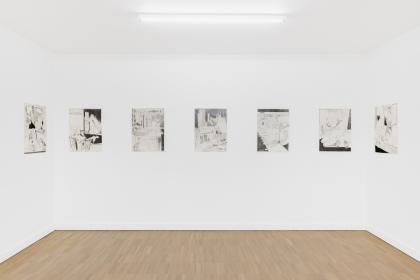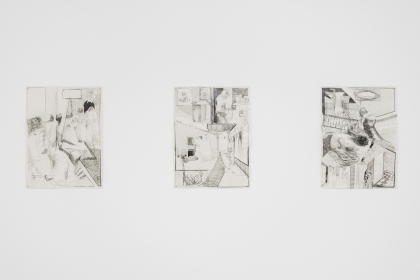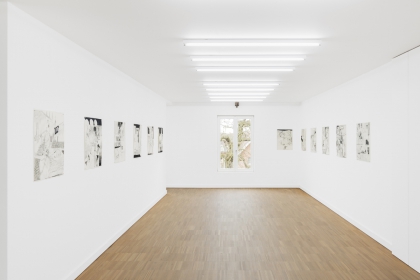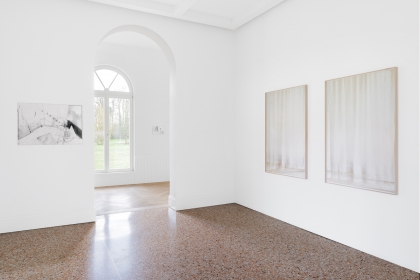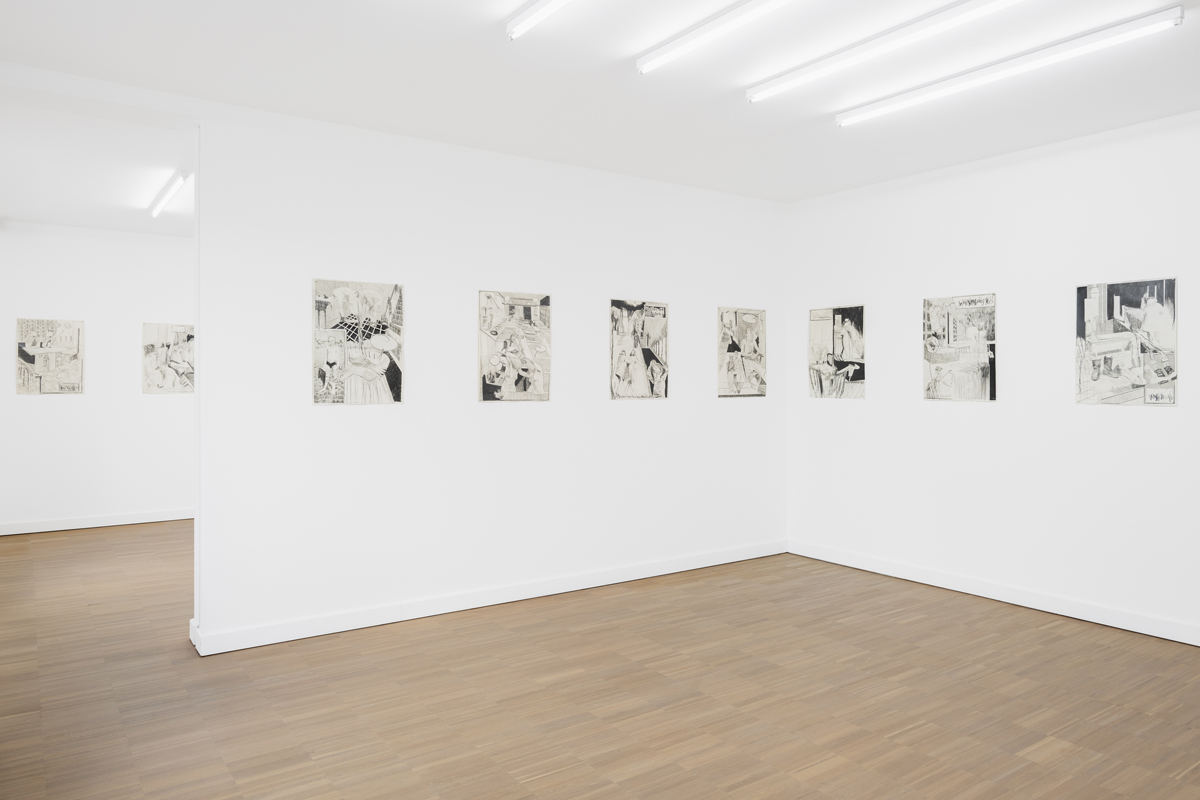
A narrative remix
Silence and subtlety are key concepts in the visual world of Sarah Westphal (b.1981). Again and again, she explores the possibilities of photography and film – they do not serve as a trigger, like an anecdote turns into a story, but are chosen for their potential as carriers of form and meaning. She chooses her motifs with caution: we see windows but above all light, sky and rooms that make thoughts possible, membrane-like glass that obscures the barely perceptible, patterns on paper that suggest a wall. The surface of the image is always tangible, touchable and legible – even when Westphal superimposes layer-upon-layer until something like a palimpsest arises, which she can scrape off, edit or let grow to her heart’s content. In this way, still images suddenly begin to move, photos are transformed into film. What remains is not a conventional image but a highly individual and intermediate form: a light drawing, a projection, sometimes a sculpture. Celluloid feels like skin, thin Japanese paper acts as a screen onto which shapes and thoughts are projected.
And reflection always plays a major role, in both senses of the word. On the one hand, Westphal plays with transparency and distortion – for example in the glass of an aquarium behind which an octopus could live, or in the reflective floor tiles of an exhibition space – while on the other hand, she makes us think. There, in the waves and the folds of the things she reveals, lies the depth of this work. For instance, her presentation Still is as much about the literally static, frozen image as it is about what is not said and is proliferating under the skin. Why can’t you read the air that hangs around things?
The new works on paper that Stefan Serneels (b. 1968) presents in The White House are not so much about the subjects depicted, but more about the act of drawing. A narrative remix confronts us with some crucial questions. What motifs does the artist choose? In which style does he elaborate them? How does he lend shape to the page and arrange the individual elements into a new entity? To what extent does chance play a role? Is there an air of coherence to the various works that we survey, in search of meaning? Does something akin to a story emerge? And furthermore: is one even necessary?
For this exhibition, Serneels has produced a series of fifty-eight drawings, half of which are exhibited here, while the remainder will be shown at the end of March at Drawing Now in Paris – as though a Suske and Wiske comic strip has been ripped in two and all the pages rearranged. In a sense, we can regard the series as Serneels’ interpretation of (and homage to?) the comic strip. Here and there, we can even recognise captions and text balloons. The scribbles and strokes that we experience as signs are not letters or symbols, however, but the artist’s own unique idiom, one that has been used in earlier works and of which we do not possess the key. If it is a code at all, that is, and not a diversionary tactic...
Rather than the direct narrative, Serneels prefers suggestion. He exchanges hard facts for conjecture: at the very moment a plot seems to crystallise, it has already been broken down, disrupted, deconstructed. We remain hungry for more, which is the intention. The message being: keep on looking.
Eric Min, February 2020

